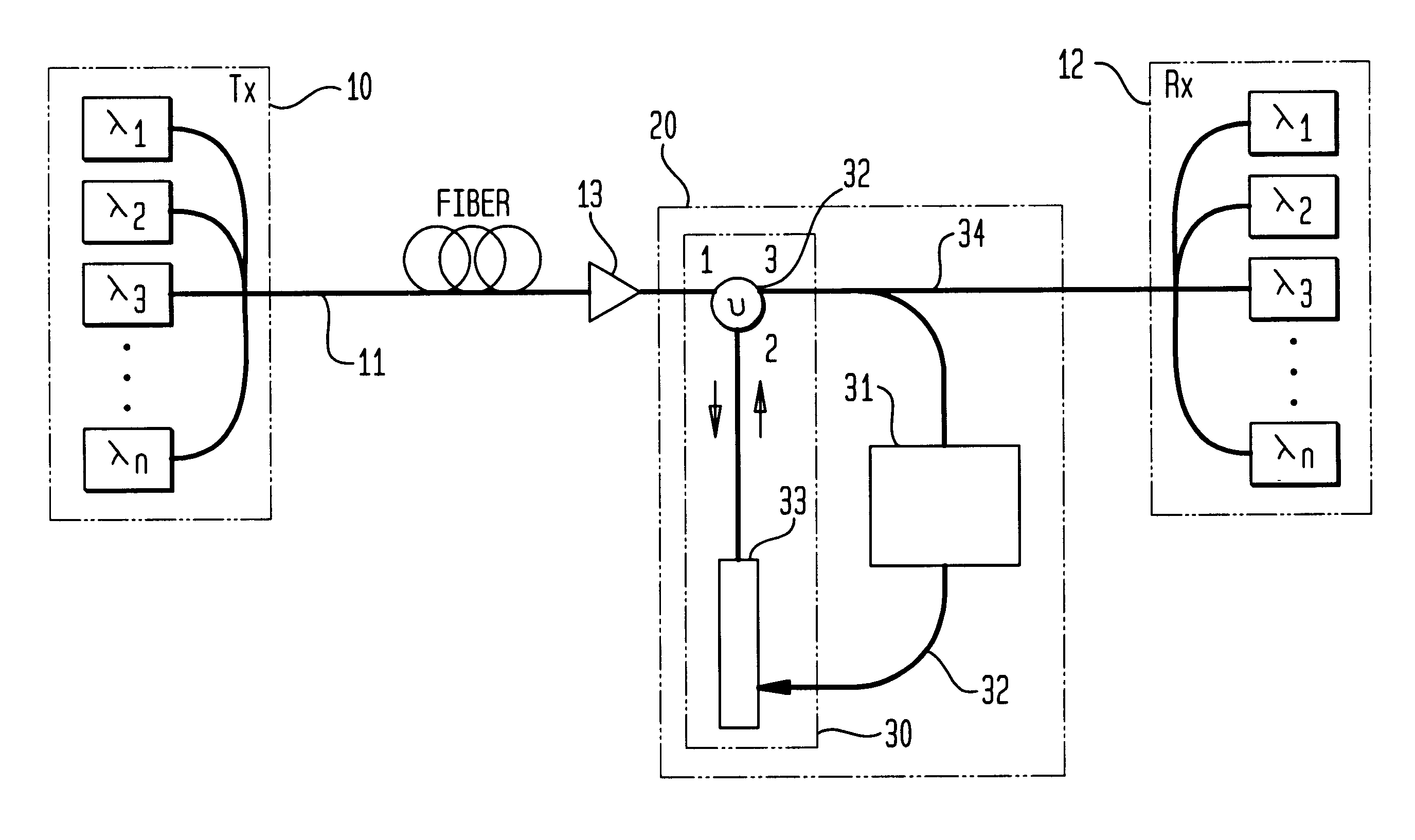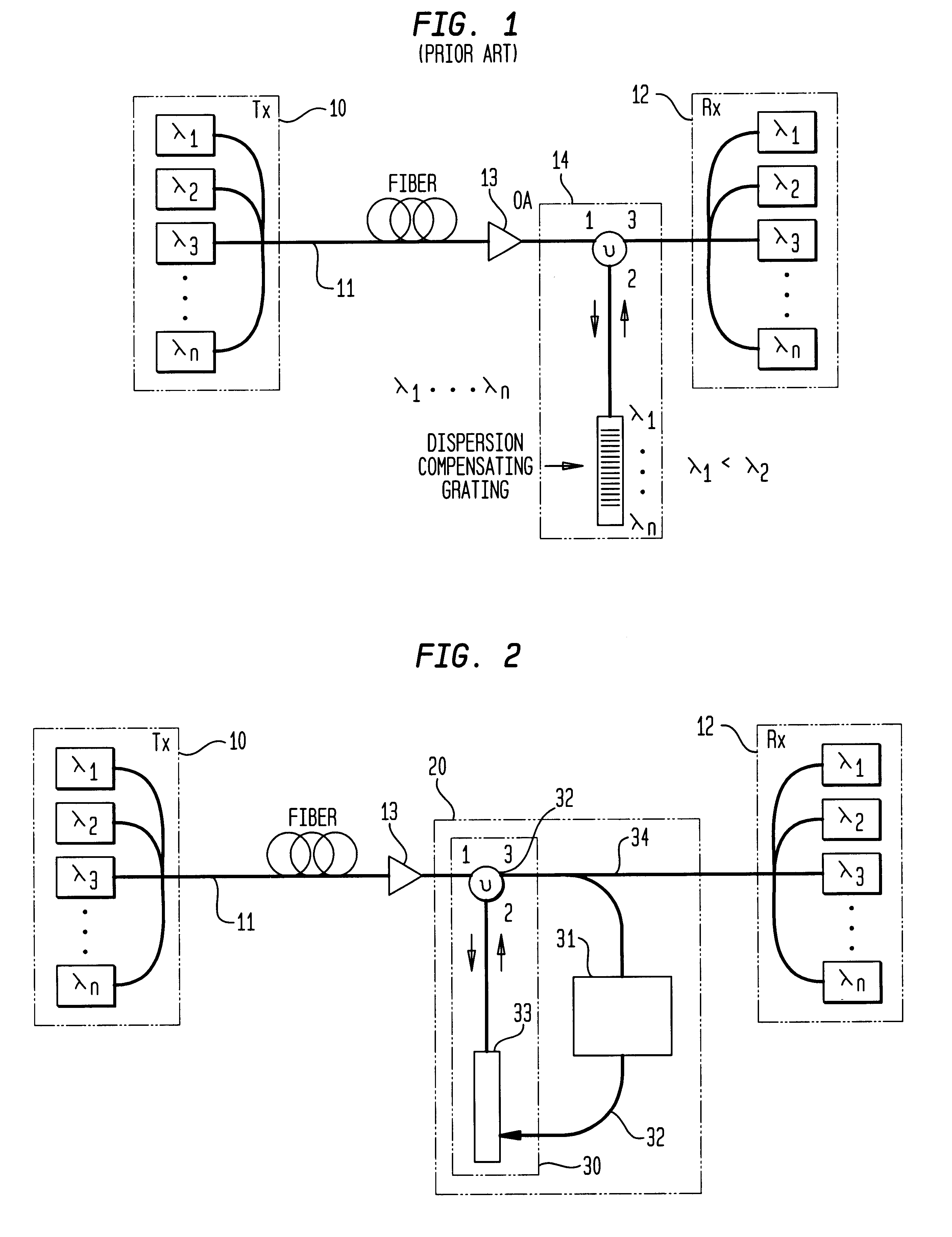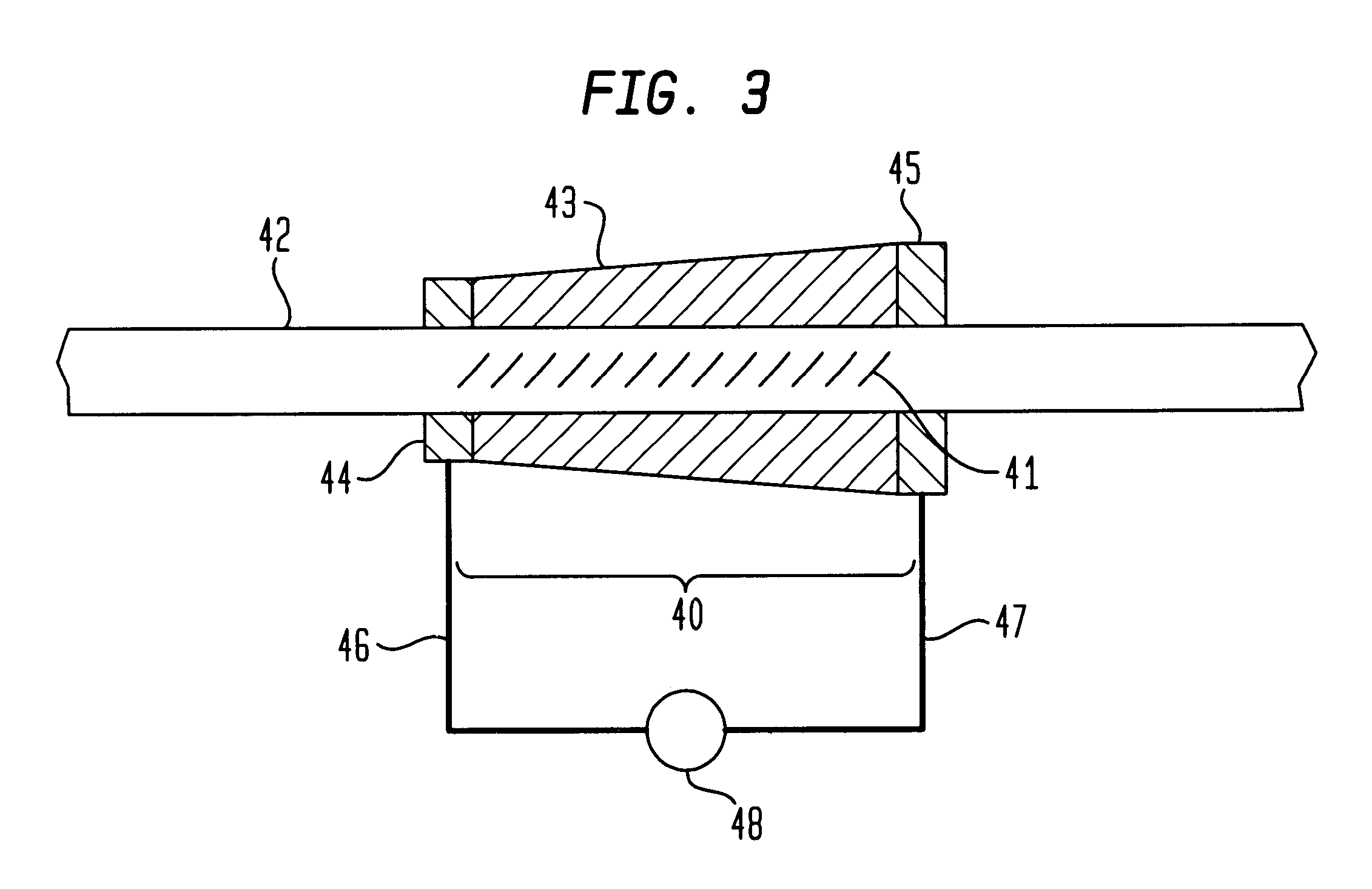Optical communication system incorporating automatic dispersion compensation modules
a technology of automatic dispersion compensation and optical communication system, which is applied in the direction of multiplex communication, instruments, optical elements, etc., can solve the problems of reducing the dispersion budget, limiting bandwidth and/or transmission distance, and exacerbated problems, so as to optimize system performan
- Summary
- Abstract
- Description
- Claims
- Application Information
AI Technical Summary
Benefits of technology
Problems solved by technology
Method used
Image
Examples
Embodiment Construction
We present detailed results on a fiber grating device that provides constant dispersion over its bandwidth and that can be dynamically adjusted by varying an applied voltage. This device relies on a linear temperature gradient induced along the length of the grating by resistive heating in a metal coating whose thickness varies inversely with position along the length of the fiber. The chirp rate, and thus the dispersion, is controlled by varying the applied current. Numerical modeling and experimental evidence confirms that, to a very good approximation, the temperature varies linearly along the length of the grating and the resulting chirp is linear. We demonstrate experimentally continuous tuning of the dispersion from 300 ps / nm to 1350 ps / nm, with less than 1 W of electrical power. Measurements of the grating dispersion characteristics reveal a group delay ripple with an average deviation from linearity of approximately 10 ps, indicating that the device would be well suited to o...
PUM
 Login to View More
Login to View More Abstract
Description
Claims
Application Information
 Login to View More
Login to View More - R&D
- Intellectual Property
- Life Sciences
- Materials
- Tech Scout
- Unparalleled Data Quality
- Higher Quality Content
- 60% Fewer Hallucinations
Browse by: Latest US Patents, China's latest patents, Technical Efficacy Thesaurus, Application Domain, Technology Topic, Popular Technical Reports.
© 2025 PatSnap. All rights reserved.Legal|Privacy policy|Modern Slavery Act Transparency Statement|Sitemap|About US| Contact US: help@patsnap.com



